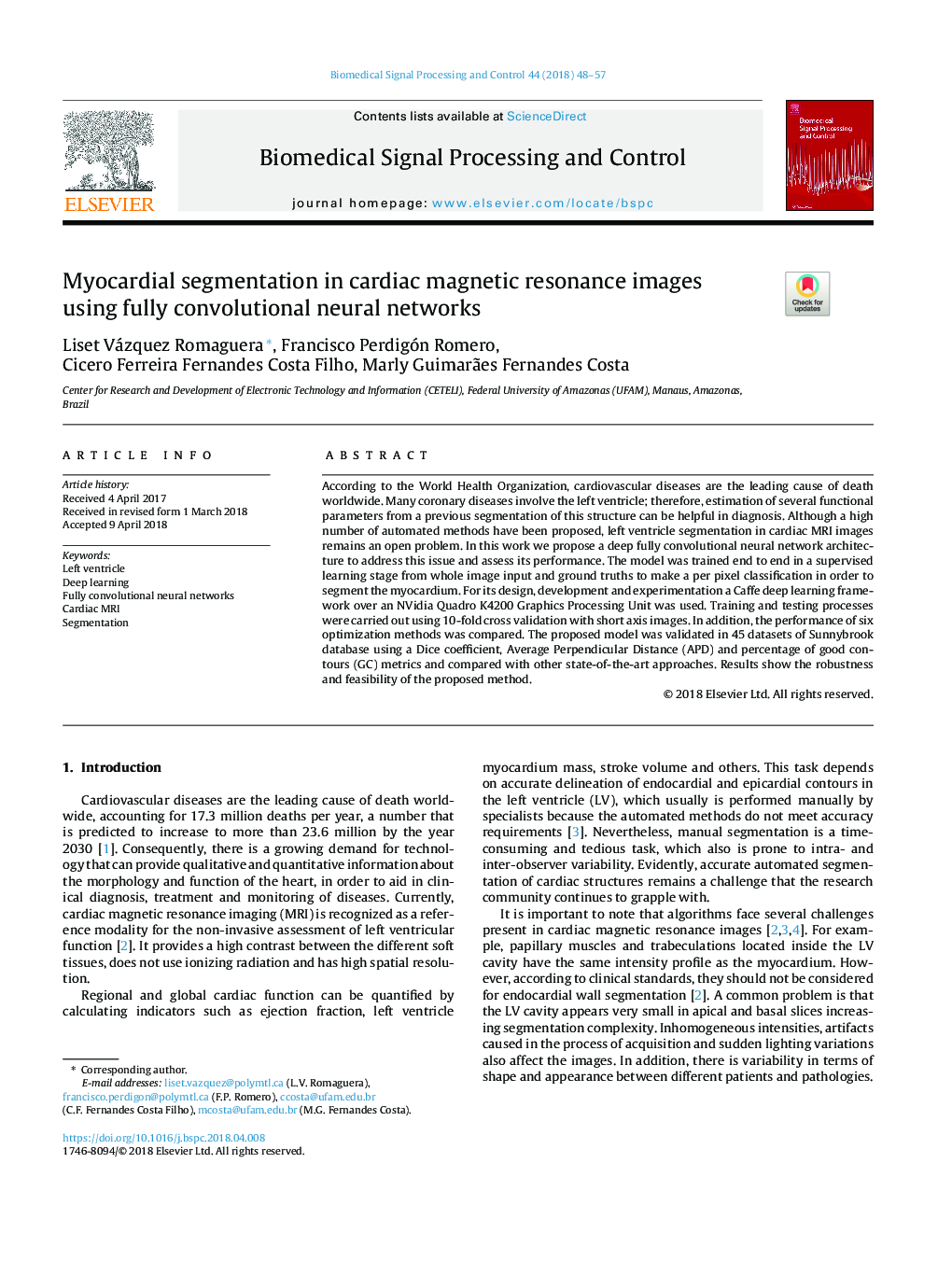| Article ID | Journal | Published Year | Pages | File Type |
|---|---|---|---|---|
| 6950761 | Biomedical Signal Processing and Control | 2018 | 10 Pages |
Abstract
According to the World Health Organization, cardiovascular diseases are the leading cause of death worldwide. Many coronary diseases involve the left ventricle; therefore, estimation of several functional parameters from a previous segmentation of this structure can be helpful in diagnosis. Although a high number of automated methods have been proposed, left ventricle segmentation in cardiac MRI images remains an open problem. In this work we propose a deep fully convolutional neural network architecture to address this issue and assess its performance. The model was trained end to end in a supervised learning stage from whole image input and ground truths to make a per pixel classification in order to segment the myocardium. For its design, development and experimentation a Caffe deep learning framework over an NVidia Quadro K4200 Graphics Processing Unit was used. Training and testing processes were carried out using 10-fold cross validation with short axis images. In addition, the performance of six optimization methods was compared. The proposed model was validated in 45 datasets of Sunnybrook database using a Dice coefficient, Average Perpendicular Distance (APD) and percentage of good contours (GC) metrics and compared with other state-of-the-art approaches. Results show the robustness and feasibility of the proposed method.
Related Topics
Physical Sciences and Engineering
Computer Science
Signal Processing
Authors
Liset Vázquez Romaguera, Francisco Perdigón Romero, Cicero Ferreira Fernandes Costa Filho, Marly Guimarães Fernandes Costa,
